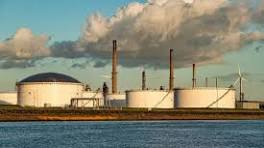BP Strikes Gas Condensate in Namibia’s Orange Basin

October 22, 2025
BP has confirmed the preliminary results of the Volans-1X exploration well in Namibia’s Orange Basin, marking another hydrocarbon success in one of the world’s most closely watched frontier regions.

The well, located in Petroleum Exploration License 85 (PEL85), was drilled by operator Rhino Resources using the Deepsea Mira semi-submersible rig to a total depth of 4,497.5 meters. It successfully intersected its Upper Cretaceous target, encountering 26 meters of net pay in gas condensate-bearing reservoirs that exhibited excellent petrophysical characteristics and no water contact.
Initial lab analyses of two samples indicate a high condensate-to-gas ratio (CGR) exceeding 140 bbl/mmscf, with liquid density near 40° API, suggesting light, valuable condensate. Further evaluation and testing are now underway to assess the full commercial potential of the find.
PEL85 is operated by Rhino Resources, holding a 42.5% stake, alongside Azule Energy (42.5%), NAMCOR (10%), and Korres Investments (5%). BP owns 50% of Azule Energy, its joint venture with Eni, effectively giving it substantial exposure to this new Namibian discovery.
The Volans-1X well represents the third major discovery in 2025 for Azule Energy and its partners, following the Capricornus-1X light oil discovery, also in Namibia, and the Gajajeira-01 gas find in Angola.
For BP, this adds to a series of eleven exploration discoveries globally this year, spanning the Gulf of Mexico (Far South discovery) and Brazil’s Santos Basin (1-BP-13-SPS well in the Bumerangue block), underscoring the company’s renewed upstream momentum.

The Orange Basin has rapidly emerged as one of the hottest global exploration plays, with multi-billion-barrel potential following high-profile discoveries by TotalEnergies and Shell. Namibia, until recently an untested frontier, is now attracting major upstream investment as operators race to delineate and commercialize its offshore resources.
This latest result reinforces both Namibia’s rising profile as a new hydrocarbon province and BP’s ongoing success in high-impact exploration, as it seeks to balance its low-carbon transition with strategically valuable upstream growth.
Oilprice.com…except images






